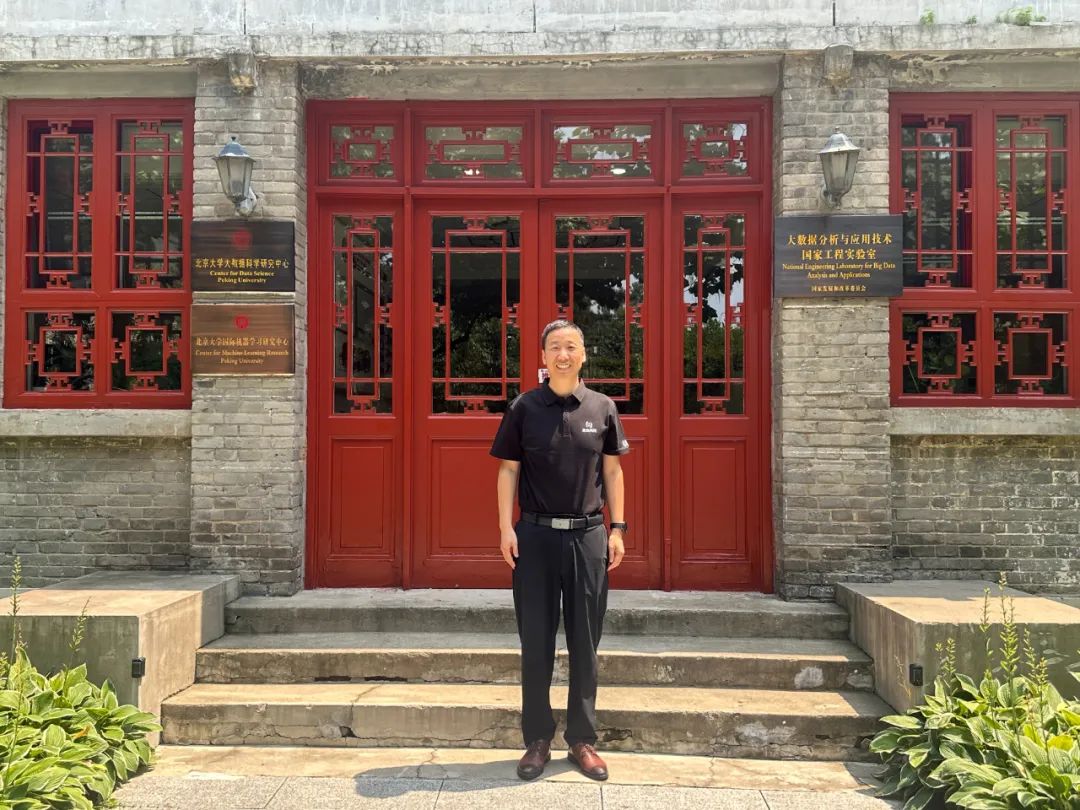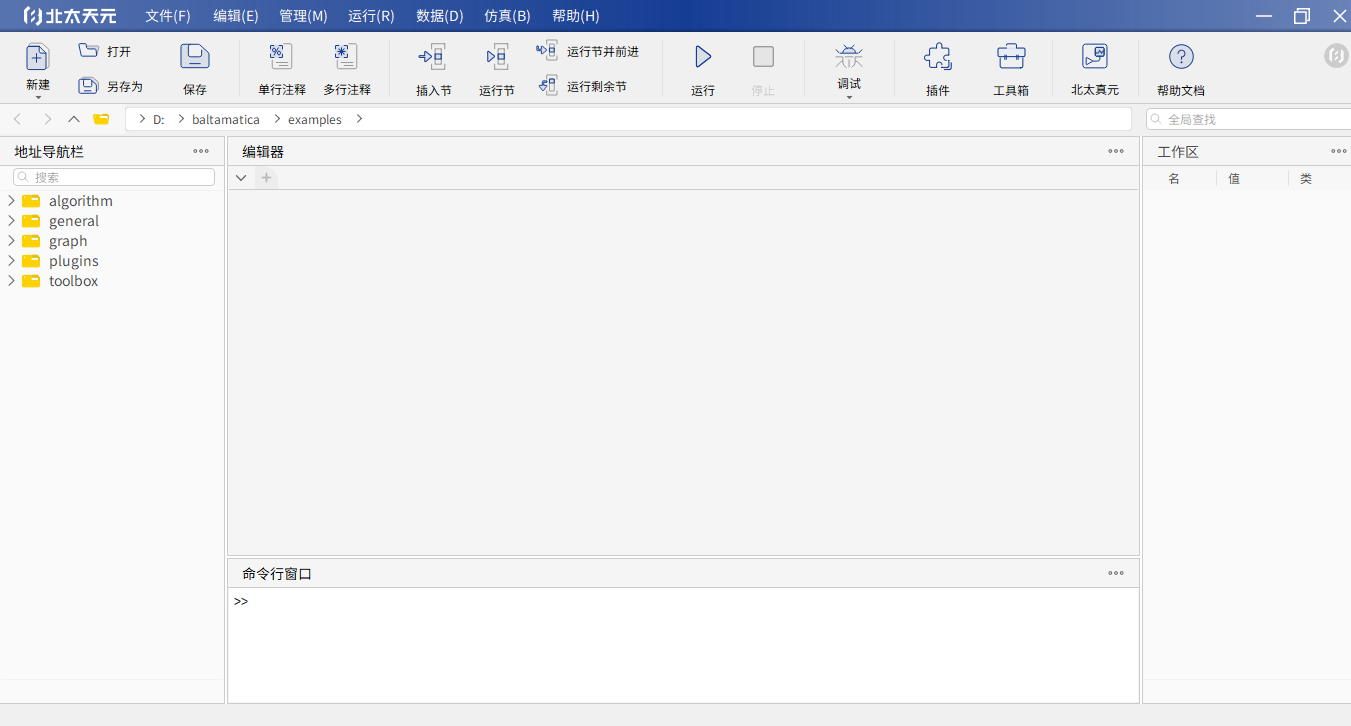Peking University, August 17, 2025: When Associate Professor Lu Tiao of Peking University’s School of Mathematical Sciences first uploaded a video tutorial to Bilibili, he had no plans of becoming a science communicator.
The video was meant to guide engineers in Chongqing who were helping develop his software project. But the platform’s response surprised him.
Since then, Lu has posted over a thousand short science clips, sometimes recording special “thank-you” messages for users who spotted bugs or offered valuable suggestions.
Behind this growing online presence is a scholar-turned-entrepreneur with an ambitious goal: to create a Chinese alternative to Western-dominated scientific computing software.

Lu Tiao, Associate Professor at PKU’s School of Mathematical Sciences
A Wake-Up Call
In June 2020, two major Chinese universities, Harbin Institute of Technology and Harbin Engineering University, were abruptly banned from using MATLAB, an American-made scientific computing platform widely used in teaching, research, and industry.
The incident exposed the risks of overreliance on foreign technology and made clear the urgency of making domestic alternatives.
Lu, deeply concerned by the setback, joined forces with his colleague, Professor Li Ruo, then Vice Dean of Peking University’s School of Mathematical Sciences. With institutional backing, the pair quickly began work on a domestic alternative.
Within half a year, they had produced a working prototype of Beitai Tianyuan, a homegrown general-purpose scientific computing software.
On Chinese New Year’s Eve 2021, Lu only went home for a quick dinner before coming back to work again. That night, Tianyuan’s first version, with a simple input-output interface, came alive on his screen.
“When I saw the results jump out of the output box, I burst into tears,” he recalled.
Building a Chinese Alternative
The name “Tianyuan” comes from tianyuan shu, an ancient Chinese method for solving equations, symbolizing the link between traditional methods and modern algebra.
From its humble beginnings, Tianyuan has developed into a competitor to MATLAB and Python, representing the fourth generation of programming languages, which are interpreted, high-level tools designed to bring computing closer to human users.
In 2022, Lu co-founded Beitai Zhenhuan (Chongqing) Technology Co., Ltd., the first company incubated by Peking University’s Chongqing Big Data Research Institute.
By 2024, Tianyuan had been adopted in more than 300 universities and 100 research institutes and enterprises.
The Ministry of Industry and Information Technology named it one of its “advanced applicable technologies” earlier this year, the only software specifically cited as capable of replacing MATLAB.

Listed at No. 97, Beitai Tianyuan was the only software cited as capable of replacing MATLAB in the Advanced Applicable Technologies list from the Ministry of Industry and Information.
Still, challenges remain.
“Developing good software is just the beginning,” Lu admits. “The real challenge is building an ecosystem that involves getting people to use it, sustaining research, and ensuring it survives long-term.”
Part of that survival strategy lies in how Tianyuan balances open source with sustainability. The global tech community has embraced open-source culture, but Lu is cautious.
“If everything is fully open, developers may lose motivation, and their work can be taken without recognition,” he argued.
Instead, Tianyuan uses a hybrid model: its core code remains closed, but plugins are open, allowing researchers and students to extend the platform. This ensures community participation while protecting the project’s foundation.
For Lu, this balance is crucial. And the results have been promising.
A team at Hebei Normal University built an image-processing tool using Tianyuan’s plugin system. At Fudan University, a professor developed a matrix function algorithm that actually runs faster on Tianyuan than on MATLAB. These examples show how controlled openness can generate innovation, foster collaboration, and still keep the software viable.
“Open source is powerful, but survival requires responsibility,” he explained. “We want Tianyuan to grow into a platform that is open enough to attract contributors but strong enough to sustain itself for decades.”
Facing Skepticism and Moving Forward
So far, not all reactions have been encouraging.
Some online commenters mocked Tianyuan as a “firecracker” compared to an “atomic bomb.” Initially discouraged, Lu soon reframed the critique.
“Every software starts small. Maybe we are not an atomic bomb yet, but at least we’re already a big explosion. And in many places, we are replacing MATLAB.”
This persistence reflects his broader philosophy of science and entrepreneurship.
For Lu, the two are not opposed but complementary.
In class, he and his students discuss the latest research. Promising ideas are developed into products through his company. When difficulties arise in development, they are brought back into academic discussion.
“This creates a closed loop of research and practice,” he said.

Lu Tiao’s Bilibili videos mix software tutorials with broader science communication
Teaching, Outreach, and the Future
Beyond research and entrepreneurship, Lu is committed to public outreach.
His Bilibili videos, mixing software tutorials with broader science communication, aim to raise awareness about both mathematics and technological independence.
In late 2024, Beitai Tianyuan released its 4.0 version, packed with new functions. Yet for Lu, the memory of that first rough 1.0 release remains most meaningful.

The interface of Beitai Tianyuan 4.1.1
“Many of our earliest users supported us from the start. They discovered issues, gave us feedback, and helped Tianyuan grow,” Lu said.
Looking ahead, Lu hopes Tianyuan will become a self-sustaining ecosystem, supported by users, developers, and institutions alike.
To this end, his team has launched developer competitions to encourage university students and researchers to build new tools with Tianyuan.
“Software thrives on users,” he said. “The more people who use it, the faster it improves. Eventually, we want Tianyuan to grow into an open, collaborative ecosystem that sustains itself. That journey will be long, but we’ve already come a very long way from a so-called ‘firecracker.’”
Written by: Sean Elijah Tan
Edited by: Chen Shizhuo
Source: China Science Daily WeChat (
Chinese)



